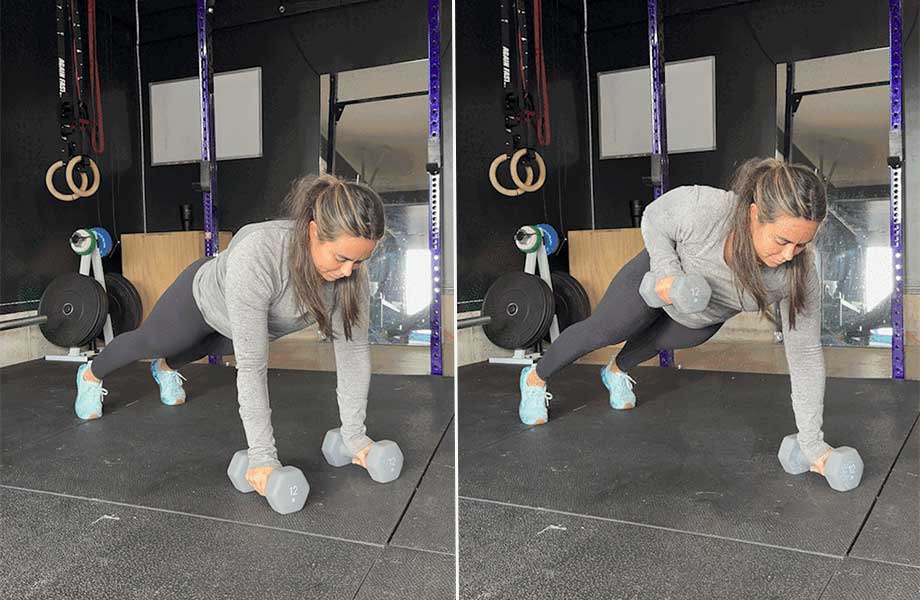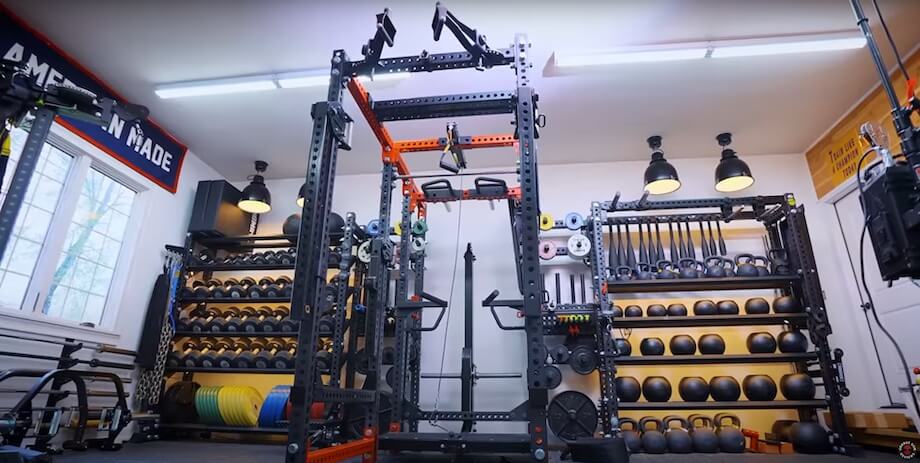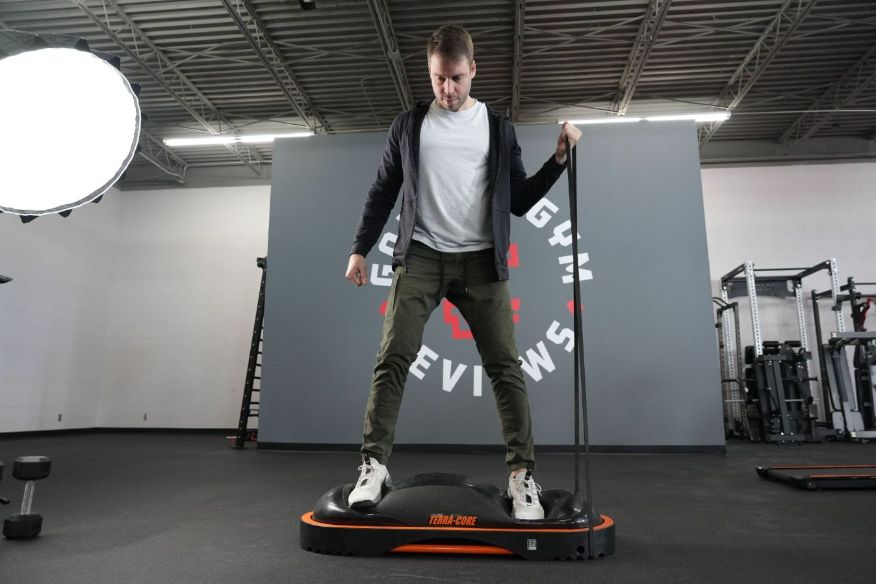Many exercises target the back and core, and sometimes, along comes an exercise that strengthens both. The best dumbbell exercises that target many muscle groups at once are challenging to perform, but when you master them, they build entire body strength and muscle. The renegade row is one of those exercises because it’s part core exercise, part back exercise.
What makes the renegade row a challenge? Your core strength limits you because you are rowing dumbbells in the front plank position. The lack of stability makes it harder to perform than a regular dumbbell row. When you’re ready to take your core strength to the next level, we’ll show you how to do a renegade row.
But be prepared to be humbled.
How To Renegade Row
- Get on your hands and knees with a pair of hex dumbbells in each hand.
- Step your feet back into a push-up position with your hands shoulder-width apart, gripping the pair of dumbbells with a neutral grip.
- Step your feet wider than hip-width apart for a more supportive base.
- Squeeze your glutes, engage your core, and row one dumbbell toward your same-side hip until the dumbbell touches your ribcage and your shoulder blades come together. Try to avoid excessive torso rotation.
- Lower the dumbbell back to the ground and repeat on the other side.
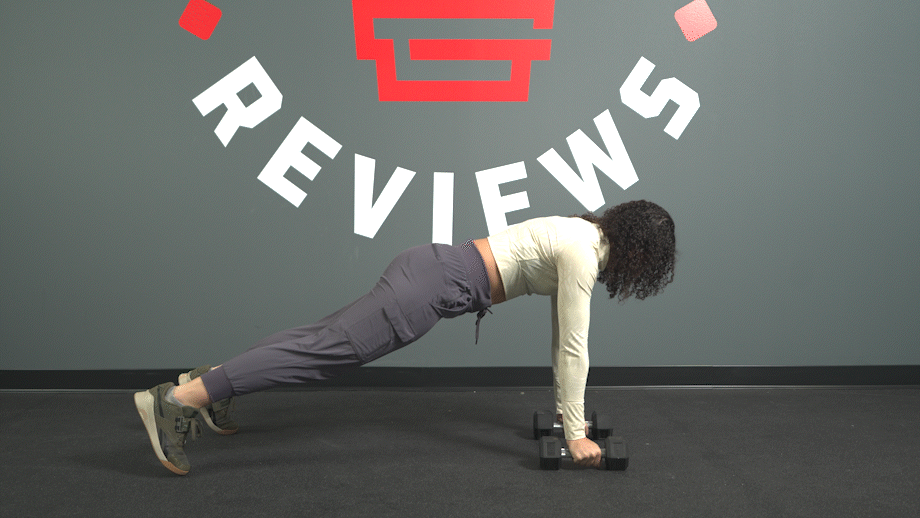
Trainer Tips for Proper Form
The renegade row is not an absolute strength exercise because lifting heavier dumbbells from the front plank position is difficult. But it will improve your total body strength while improving your mental toughness. Here are the primary technique tips to watch out for when performing this exercise.
Start With Hex Dumbbells
Hex dumbbells allow you to safely navigate this challenging exercise because their six flat sides give you more stability while in the front plank. You can perform this with kettlebells or round dumbbells, but it’s more difficult.
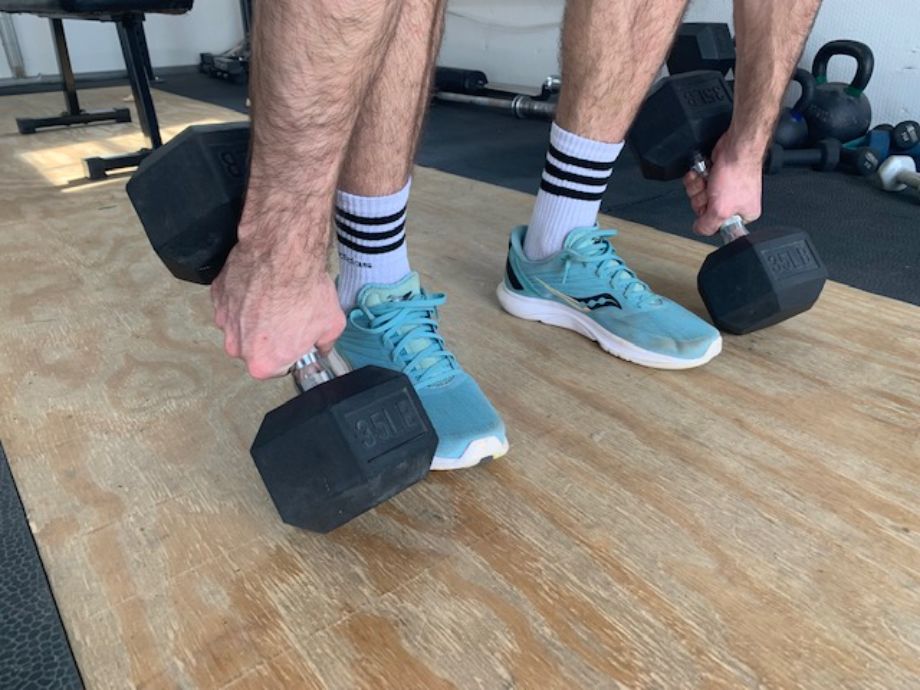
RELATED: Best Dumbbells: Top Picks for Hex, Adjustable, and Iron
Take Your Time with the Front Plank
A solid front plank position is the starting position and the foundation of this exercise. Ensure your hands are underneath your shoulders, place your feet wider than hip-width apart, and squeeze your glutes to keep your lower back neutral. Your spine should be straight from head to glutes, and your legs straight.
Not Too Little, Not Too Much, Just Right
When beginning this exercise, ensure that your arms are extended before and after you finish the exercise. A good reference point is to row the dumbbell toward your hip until it brushes your ribcage. If it doesn’t, the range of motion is too small, and if your blast passes the ribcage, the ROM is too much.
Minimize Torso Rotation
There will be some upper-body rotation, but you don’t want too much, as this will make the exercise easier and you’ll lose some of the core strengthening benefits. If you rotate excessively, get your feet further apart for a broader support base.
Renegade Row Benefits
The renegade row is a challenging exercise focusing on core and back strength with a reduced weight. It’s tough to do, but it has a few essential benefits.
Trains More Muscle
Although you cannot use as much weight with the renegade row as other dumbbell back exercises, you’ll work more muscle. Rowing from the plank position trains the core, hip, and shoulder stabilizers more than other dumbbell back exercises.
Strengthens Imbalances
One of the reasons the renegade row is tough is that you are training unilaterally. Doing so helps correct any strength imbalances between sides, mainly your grip, upper back, and lat muscles. While lifting unilaterally, you throw your body off balance, forcing your core muscles to work harder, too.
Improved Conditioning
Because of the amount of muscle training with the renegade row, your heart needs to work harder to get blood to your working muscles. This results in a raised heart rate and the active muscles being under tension longer, which improves muscular endurance and overall conditioning.
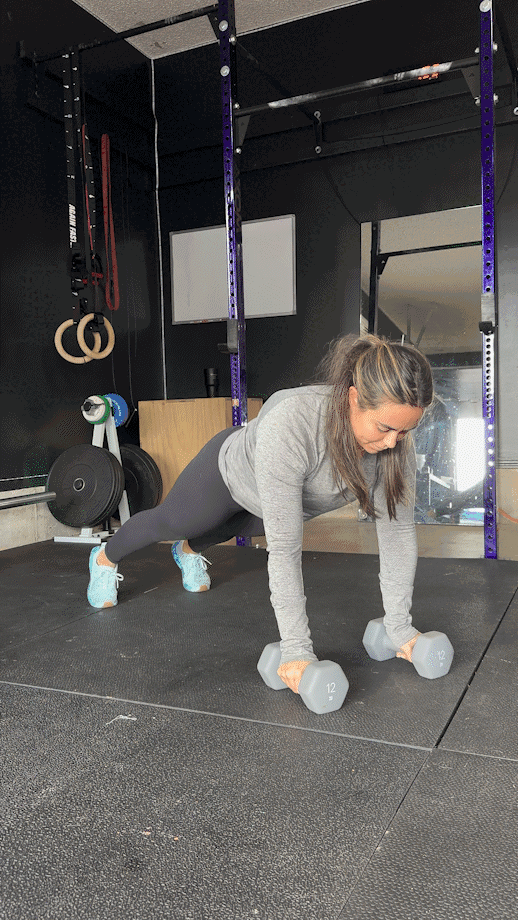
Common Renegade Row Mistakes
Renegade rows seem simple as you hold a plank and do a row. How hard can it be? But a lot is happening under the surface, and it pays to watch out for these common mistakes.
Going Too Heavy
Don’t confuse the renegade with an all-out strength exercise. This exercise is not about how much weight you can row but how much you can lift with good form because the renegade row is a total-body strength exercise, not just a lats exercise. Going too heavy means you’ll cheat to lift the weight, and the core and back strengthening benefits disappear.
Losing Control
Getting stronger is all about maintaining muscular tension, and when you go too heavy here, you’ll lose control and the dumbbells may land too hard. Not only will you lose the muscle-building tension, but you can hurt your wrists when the dumbbells slam to the ground. Avoid this by starting with a lighter weight than your usual row variation.
Excessive Upper Body Rotation
If you’re using a heavy weight or are a beginner to this exercise, your body will likely shift to the side when rowing the weight toward your hip. If you row with your right hand, your right hip and shoulder may rotate to the left as compensation. Try to prevent rotation by using a weight you can handle and widening your support base.
Renegade Row Variations
Once you have perfect form with this exercise and looking for more of a challenge, take these variations out for a test drive. You may be pleased. Or not.
Renegade Row Push-Up
Do the renegade row as usual, and after doing both sides, perform a bodyweight push-up, which is one rep. You’ll take a full-body exercise up a notch by training the chest and triceps.
Elevated Renegade Row
Elevating your feet onto a weight bench increases your range of motion with the row and places more demand on your core muscles to maintain a solid front plank position. Add a decline push-up to this if you dare.
Kettlebell Renegade Row
Kettlebells have a more unstable base than the dumbbell variation and require more shoulder and core stability. Ensure you have mastered the dumbbell variation before attempting this advanced variation.
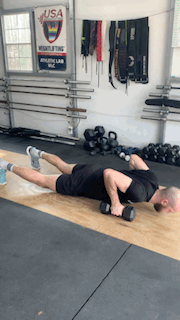
Useful Renegade Row Equipment Accessories
Maintaining a neutral grip and wrist position is vital here, and if you have trouble doing that, wrist wraps may help. Wrist straps may improve your form, and you’ll be able to grip the dumbbells longer for hopefully more repetitions.
FAQs: How To Do a Renegade Row
How do you do the renegade row step by step?
Holding a hex dumbbell in each hand, set up in a plank position.
Step your feet wider than hip-width and engage your glutes to get your spine in a straight line.
Row one dumbbell up toward the same-side hip, trying not to rotate from side to side.
Lower the weight back to the floor and repeat on the other side. Reset between each rep to maintain a solid front plank position.
Why is a renegade row so hard?
What makes the renegade row so hard is the lack of stability and the amount of total body muscles its trains. Every time you row the dumbbell, you only have three contact points, one dumbbell, and two feet. Because you’re in the front plank position, you’ll train more muscle than just the back muscles, and that’s why it is so hard.
What muscles does a renegade row work?
More to the point, what muscles doesn’t it work? The main muscles trained by the renegade row are latissimus dorsi, serratus anterior, rhomboids, middle traps, (upper back) obliques, rectus abdominis, anterior deltoids, biceps, and forearms.
How effective is the renegade row?
Well, it depends on what you are training for. If you’re training for size and strength, there are better back exercises to do because you’re limited in the weight you can lift here. The renegade row is an effective exercise to build strength in your core and works your whole body to a lesser extent.


